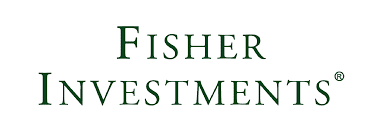If you’re looking to invest your money but are worried about the risks involved, you’re not alone. Many people are hesitant to invest in stocks or other high-risk opportunities, and that’s understandable. But did you know there are a number of low-risk investment options available right now? In this blog post, we’ll discuss seven of the best low-risk investments available right now. So whether you’re just starting out with investing or you’re looking for a more secure option, read on for some great ideas!
Best Low-Risk Investments Right Now
1. Savings Accounts
A savings account is a great way to invest your money without taking on too much risk. Your money is FDIC-insured, which means it’s backed by the government up to $250,000. And while the interest rates on savings accounts are low right now, they are still a safe place to grow your money over time.
2. Certificates of Deposit
A certificate of deposit (CD) is another low-risk investment option. With a CD, you agree to leave your money in the account for a set period of time, typically between six months and five years. In exchange for this commitment, you’ll earn a higher interest rate than you would with a savings account. CDs are also FDIC-insured, so you don’t have to worry about losing your money if the bank fails.
3. Treasury Securities
Treasury securities are one of the safest investment options available. They are issued by the federal government and backed by the full faith and credit of the United States. Treasury securities include Treasury bills, notes, and bonds. Bills have short-term maturity dates of up to one year, notes have medium-term maturity dates of two to 10 years, and bonds have long-term maturity dates of 20 or 30 years.
4. Municipal Bonds
Municipal bonds are a type of debt security issued by state and local governments to finance public projects like roads, bridges, and schools. Municipal bonds are generally considered to be low-risk investments because they are backed by the revenue from the projects they finance. For example, if you invest in a bond that finances a new highway, your investment is backed by the tolls collected from drivers using the highway.
5. Corporate Bonds
Corporate bonds are debt securities issued by companies to raise capital for their operations. Corporate bonds are typically less risky than stocks, but there is still some risk involved. For example, if the company goes bankrupt, you could lose your investment. However, if the company does well, you could earn a higher return on your investment than you would with a savings account or government bond.
6. Real Estate Investment Trusts
Real estate investment trusts (REITs) are a type of investment that allows you to invest in a portfolio of real estate properties without having to actually own any property yourself. REITs are required by law to pay out at least 90% of their taxable income to shareholders, which makes them a great choice for investors who want to receive regular income from their investments.
7. Index Funds
Index funds are a type of investment that tracks a specific market index, such as the S&P 500. Index funds are a good option for investors who want to diversify their portfolio without having to choose individual stocks. Index funds are typically less risky than stock picking because they provide built-in diversification.
FAQs about high-yield investments
Find answers to any lingering high-yield investing questions below.
Which investment gives the highest return in the short term?
The investment with the highest return in the short term is typically going to be a stock or mutual fund. However, there is always risk associated with these types of investments, so be sure to do your research before investing.
What is the best way to invest in bonds?
The best way to invest in bonds is to buy them directly from the government through sites like Treasury Direct or through a bond mutual fund.
What is the difference between a stock and a bond?
A stock represents an ownership stake in a company, while a bond is a loan that an investor makes to a company or government. Both stocks and bonds can be bought and sold on exchanges.
What are some other low-risk investments?
Some other low-risk investments include government bonds, Treasury securities, and municipal bonds. These types of investments are typically backed by the full faith and credit of the United States government, so there is little risk involved.
What is the difference between a savings account and a CD?
A savings account is a type of bank account where you can deposit money and earn interest on your balance. A CD is a type of savings account that requires you to keep your money deposited for a set period of time in exchange for a higher interest rate. CDs are FDIC-insured, so they are considered to be low-risk investments.
The Bottom Line
There are a number of low-risk investment options available right now. Savings accounts, CDs, and government bonds are some of the safest options. For a higher return, you can consider corporate bonds, REITs, or index funds. Just remember to diversify your portfolio to reduce your overall risk.
Have you ever considered any of these low-risk investments? What other safe investments do you like?


